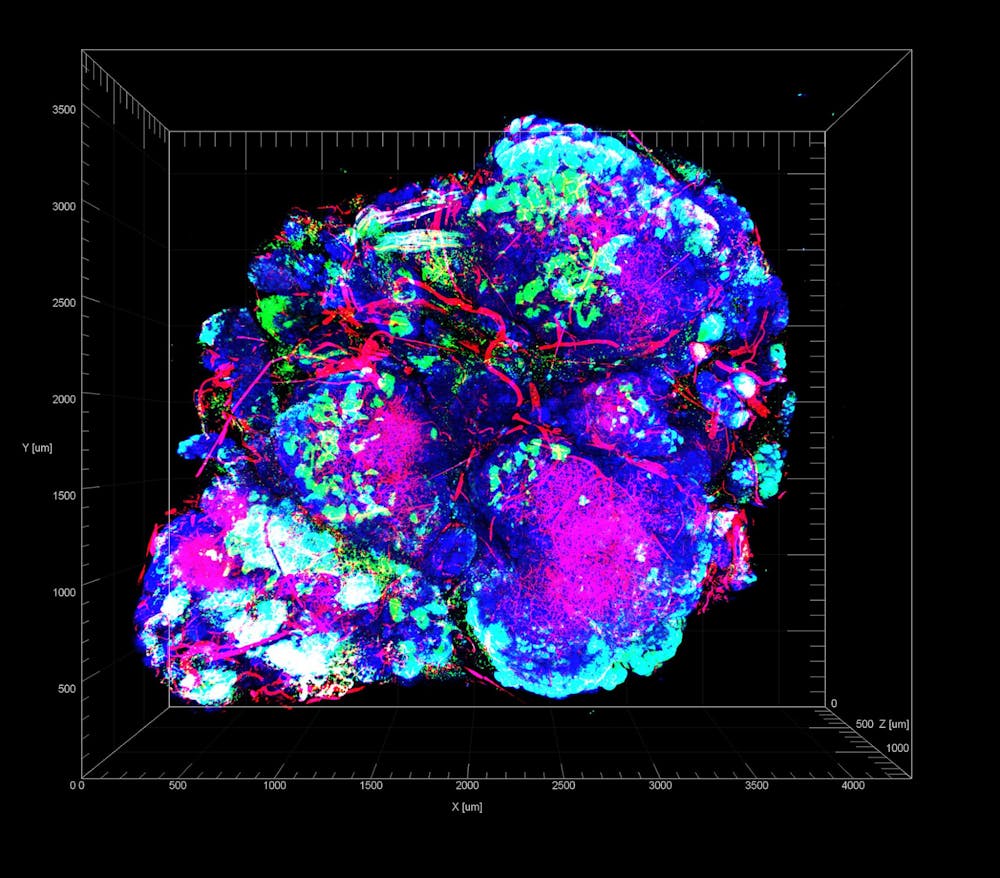As the semester rushes toward its finale, we hope you take a moment to learn about several of this week's major scientific breakthroughs. Among these are the development of hypoxia-inducing batteries, a new understanding of deep-sea circulation and the discovery of ultrasonic plant emissions released under stress.
Using batteries to treat cancer
A group of researchers from Fudan University in China have recently designed a self-charging battery that can starve cancer cells of oxygen. The battery consists of bio-safe electrodes that deplete nearby oxygen levels through a reduction-oxidation reaction. Additionally, it can produce reactive oxygen species that destroy tumor cell DNA. Not only has this approach demonstrated robust prevention against tumor formation, but this technique synergistically pairs with new treatments.
A particularly interesting treatment class is hypoxia-activated prodrugs. These drugs are chemically designed to only activate in low-oxygen environments, which are regions present in many tumors. However, this treatment alone has proven to be ineffective in numerous clinical trials because of the heterogeneity in tumor hypoxia.
This battery can be specifically wrapped around a tumor to create an oxygen-deficient pocket that can enhance hypoxia-activated prodrug efficacy. The battery alone shrunk tumors in mice models by 26%, but when paired with hypoxia-activated prodrugs, this figure increased to 90%.
The battery has only been tested against a specific mouse breast tumor, so the technology still has a long way to go before being ready for human trials. The authors are hopeful that even against human-sized tumors, the battery may show synergistic treatment efficacy.
Brain circuits promoting binge eating have similarities to those for other habits
A study published in Science Translational Medicine from a research lab at Stanford analyzed the neural wiring of binge eaters. The researchers demonstrated that people with eating disorders have a stronger connection between the sensorimotor putamen and the motor cortex, which are the two regions of the brain involved in habit-making. Even the physical structure of the brain, like dopamine receptor binding activity and putamen gray matter microstructure, was significantly altered.
The patterns of alteration were similar to those seen in people with drug addiction and other compulsive disorders. This suggests that neural-targeted treatments effective against compulsive disorders may work for people with eating disorders and provide a diagnostic way to identify eating disorders before they progress.
More work is needed to study the neural wiring associated with eating disorders. The direction of the link is not well-established: Does the neural wiring cause the eating disorder, or does the eating disorder change the neural wiring (or both)?
Ocean overturning predicted to slow because of carbon emissions
Deep overturning circulation — a system of ocean currents throughout the globe generated by water salt and density differences — is an important factor for distributing heat, carbon and nutrients throughout the world. However, a study recently published in Nature estimated that the overturning cycle in Antarctica may slow down by more than 40% over the next 30 years with current carbon emission rates. This cycle may even collapse at some point, according to authors.
If such a collapse were to occur, then deep waters below 4,000 meters would not circulate and nutrients could be trapped and will not be distributed to the ocean surface. Reduced circulation also leads to deep ocean warming, which already began occurring over the past years.
It is important to note that models, especially on a global scale, may have limitations in their accuracy. Even so, this worst-case scenario signifies that ocean biogeochemistry could be at risk.
Stressed plants are noisy
According to a study published in Cell, plants under stress (for example, facing physical damage or dehydration) emit ultrasonic noises undetectable to the human ear. A dehydrated tomato plant emitted 35 click-like sounds per minute. In comparison, a tomato plant cut at the stem made less noise, a tobacco plant even less and an unstressed plant made almost no noise.
The noise patterns are specific to different plant species: A machine learning model was able to differentiate between tomato and tobacco plants just based on their noise. These noises were so recognizable that they could be distinguished even in a noisy room with other people around. This method of distinguishing stressed from unstressed plants could be useful in the agricultural industry.
The question remains as to the importance of these noises. Many insects, including moths, hear in the ultrasonic range, so maybe they could be listening to these plant conversations. But future studies are needed to determine the evolutionary significance of these plant voices.





